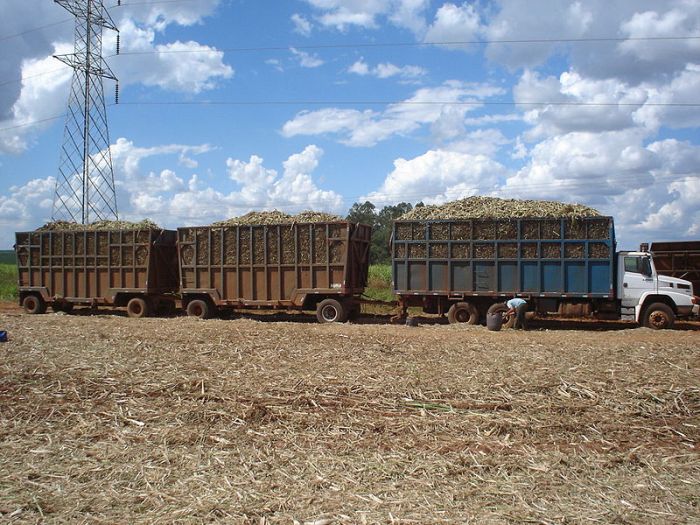Sugarcane is one of the most promising agricultural sources of biomass energy in the world. Sugarcane produces mainly two types of biomass – sugarcane trash and bagasse. Sugarcane trash is the field residue remaining after harvesting the sugarcane stalk while bagasse is the fibrous residue left over after milling of the sugarcane, with 45-50% moisture content and consisting of a mixture of hard fibre, with soft and smooth parenchymatous (pith) tissue with high hygroscopic property.
Bagasse contains mainly cellulose, hemicellulose, pentosans, lignin, sugars, wax, and minerals. The quantity obtained varies from 22 to 36% on sugarcane and is mainly due to the fibre portion in the sugarcane and the cleanliness of sugarcane supplied, which, in turn, depends on harvesting practices.
The composition of bagasse depends on the variety and maturity of sugarcane as well as harvesting methods applied and efficiency of the sugar processing. Bagasse is usually combusted in furnaces to produce steam for power generation. Bagasse is also emerging as an attractive feedstock for bioethanol production.
It is also utilized as the raw material for production of paper and as feedstock for cattle. The value of Bagasse as a fuel depends largely on its calorific value, which in turn is affected by its composition, especially with respect to its water content and to the calorific value of the sugarcane crop, which depends mainly on its sucrose content.
Moisture contents is the main determinant of calorific value i.e. the lower the moisture content, the higher the calorific value. A good milling process will result in low moisture of 45% whereas 52% moisture would indicate poor milling efficiency. Most mills produce Bagasse of 48% moisture content, and most boilers are designed to burn Bagasse at around 50% moisture.
Bagasse also contains approximately equal proportion of fibre (cellulose), the components of which are carbon, hydrogen and oxygen, some sucrose (1-2 %), and ash originating from extraneous matter. Extraneous matter content is higher with mechanical harvesting and subsequently results in lower calorific value.
For every 100 tons of Sugarcane crushed, a Sugar factory produces nearly 30 tons of wet Bagasse. Bagasse is often used as a primary fuel source for Sugar mills; when burned in quantity, it produces sufficient heat and electrical energy to supply all the needs of a typical Sugar mill, with energy to spare. The resulting CO2 emissions are equal to the amount of CO2 that the Sugarcane plant absorbed from the atmosphere during its growing phase, which makes the process of cogeneration greenhouse gas-neutral.
Cogeneration of bagasse is one of the most attractive and successful biomass energy projects that have already been demonstrated in many sugarcane producing countries such as Mauritius, Reunion Island, India and Brazil. Combined heat and power from sugarcane in the form of power generation offers renewable energy options that promote sustainable development, take advantage of domestic resources, increase profitability and competitiveness in the industry, and cost-effectively address climate mitigation and other environmental goals.












